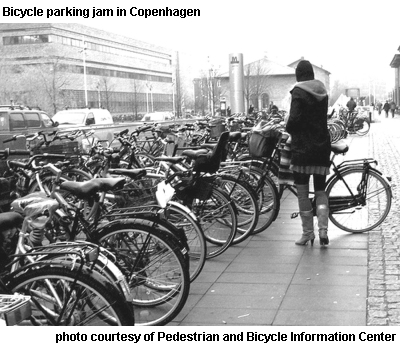The American Dream is a Planetary NightmareBy Jim Lazar
Many of us grew up in suburban single-family homes, and expected to live "better" than our parents. That's the American way. However, American land-use patterns are utterly unsustainable, causing huge impacts on water quality, energy consumption, and air quality including greenhouse gases. While 75% of Americans live in single-family homes, 75% of Europeans do not. Indeed, the American Dream home (a single family home in the suburbs, with a large lot and a big garage) simply devours resources. In 1950, the average new home was 1100 square feet. You can see lots of these throughout Olympia, e.g., in the close-in Westside neighborhoods. Today the average new home is 2450 square feet, and McMansions of 5,000 square feet or more are increasingly common. The list of resources used by our housing patterns is pretty scary. A typical new home uses twice as much wood, steel, aluminum, copper, plastic, and concrete as would be needed to provide a condominium with the "right" number of bedrooms. Metals and plastics are extremely energy-intensive products. The impervious surfaces of a new home – the roof, driveway, patios, and porches cause significant runoff of stormwater. In Olympia, which has adopted the 2001 Department of Ecology Stormwater Management Manual, this must be handled "on-site" meaning the rain gutters must flow into the soil; the rules are much less stringent outside of Olympia, where older standards apply. The streets are another story altogether. First, up to 40% of the land area associated with new development is devoted to the streets and associated stormwater facilities. The impervious surface of the streets is normally flowed into gigantic stormwater ponds; the ugliest of these are visible at the newest housing developments along Mud Bay Road, built to the new Stormwater Management Manual standards. Energy consumption of the homes must also be considered, though this is a speck of good news. A typical new home is much better insulated than a 1950s model, and has much more efficient appliances. Despite being twice as large, these homes typically use no more natural gas or electricity than their much-smaller predecessors. Compared to a "right-sized" condominium or townhome, built with common-wall construction that reduces heating requirements dramatically, new single family homes use about 50% more energy. Our lawns and landscaping devour water, and our fertilizer washes down into the groundwater and eventually into streams. Over half of the water delivered by the average water utility goes for irrigation – and very little of that is for food-producing gardens. Perhaps the worst element of our suburban development style, however, lies in the transportation impacts. Half of this state's greenhouse gas emissions come from transportation. The typical new home generates about 10 auto trips per day. People drive to work, school, the grocery store, and shopping centers. Seventy-five percent of Americans get to work by private auto; among Europeans, the same percentage walk, bicycle, or use transit to get to work. For every car, there are five parking places, because people want to park at each of their destinations. The land devoted to parking, and the water quality impacts of the runoff from parking are horrendous. Look at an aerial photo of Lacey or West Olympia: more than half of the land is devoted to streets, driveways, and parking areas. Transit planners tell us that housing must be built at 12 units per acre in order to support frequent transit service; most developments in Olympia fall in the 4 – 8 unit per acre category (this includes the seemingly-dense D.R. Horton neighborhoods built off of Mud Bay Road and Yelm Highway). Our County Commissioners just asked Intercity Transit to reconsider offering transit service to the rural parts of the County – after adopting land use regulations that specifically contradicted the guidelines set out by transit planners. The measurement used by planners for auto travel, Vehicle Miles Traveled (VMT) has continued to rise, even as gasoline prices have increased. Much of this is the result of what's known as "Drive-a-Little, Save-a-Lot" housing prices – it's much cheaper to live in Olympia than Seattle, and much cheaper to live in McCleary than Olympia. At least until recent gas price spikes, over half of new homes sold in Thurston County were being sold to families where at least one family member worked out-of-county. Land use is the big driver – when you live in apartments and condos, the bus stops at your door, and runs frequently. The answer is pretty simple: Compare the urban scene of Copenhagen, Amsterdam, or Paris to that of most American cities. Compare the "town" scene of smaller cities in Europe to that of Olympia. In Europe, you see pedestrians and transit. In America you see cars and parking lots. Indeed, the American Dream is a Planetary Nightmare. Think about it: do you really want your very own riding lawnmower, and to spend an hour a day and 15% of your income getting to and from work, or would you be better off in a modern townhouse, condo or co-housing development, with a 1/48 share of a lap pool and gym, a daycare on the same block, and the transit bus to work stopping a 100-foot walk from your front door? Jim Lazar is a consulting economist based in Olympia. His world-wide consulting practice involves energy conservation and energy pricing. He lives in a big suburban house in Olympia – an 11-minute bicycle ride from his office. But he's getting serious about shopping for a condo or co-housing alternative.
Back to Home page. |

